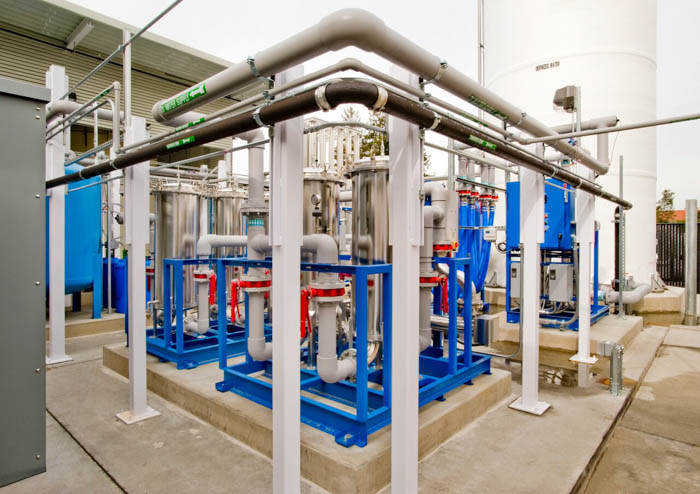So many companies are now investing on industrial water treatment equipment for various reasons. There is many crucial information to know about so to help you understand how the specific wastewater equipment types effect a company’s profitability, we have created this insightful post.
Distillation via vacuum evaporation-
Clean separation by evaporation is an accepted best available approach in many wastewater treatment procedures. Since the water is removed rather than filtered out, it is unique from other separation techniques in that way.
According to research, the vacuum evaporators are the only technology that can achieve water recovery and concentration rates as high as 1 to 120 tons per day for industrial wastewater treatment and distillation.
Ultrafiltration systems are-
Ultrafiltration (UF) is a pressure-driven process that employs a membrane to extract large molecular weight molecules from wastewater, coolant, and other solutions, such as emulsified oils, metal hydroxides, emulsions, dispersed material, and suspended particles.
Suspended particles, bacteria, and macromolecules, including oil and water, may all be dissolved with UF technology.
As per various data, oily water volumes could easily be reduced by up to 98% without the use of chemical additions in UF systems. Deburring and tumbling processes may also benefit from these systems’ ability to remove tiny particles, allowing for water and soap solution reuse.
Systems that use reverse osmosis-
RO technology eliminates dissolved particles and pollutants from water by utilizing a semipermeable membrane, which enables water to flow through, but leaves the bulk of dissolved solids/salts and other contaminants in the water as well.
For the RO membranes to work correctly, high-pressure water and a pressure higher than the osmotic pressure are required. There are two types of water: permeate and concentrate.
There are several applications in which a RO system may remove up to 99.5 percent of the pollutants that are present in the wastewater or feedwater if the system is correctly built and run.
Separators for tramp oil-
This industrial water treatment solution has a set of baffles and a porous media bed separate free and mechanically dispersed oils from the polluted fluid. The effluent discharge weir then directs the purified waters back into the reservoir.
At the top of the separator, waste oils, inverted emulsions, and other byproducts are gathered and automatically ejected. Tramp oil may be reduced to less than 1% using gravity flow and coalescence in a single pass without the use of any consumable goods.
Related posts
Recent Posts
- ETF Trading Algorithms: Advanced Automation Strategies for UAE Traders April 11, 2024
- Discover the Advantages of Hiring a WordPress maintenance agency March 27, 2024
- Exploring Abrasion Resistance with Dual Rub Testing Technique October 2, 2023
- Olugbenga Agboola: Pioneering African Technology through Flutterwave September 16, 2023
- Mastering SMS Campaigns: A Comprehensive Guide to Success September 15, 2023
Archives
- April 2024
- March 2024
- October 2023
- September 2023
- August 2023
- July 2023
- June 2023
- April 2023
- March 2023
- February 2023
- January 2023
- December 2022
- November 2022
- October 2022
- July 2022
- June 2022
- May 2022
- April 2022
- March 2022
- February 2022
- December 2021
- November 2021
- October 2021
- September 2021
- August 2021
- July 2021
- June 2021
- May 2021
- April 2021
- March 2021
- December 2020
- October 2020
- September 2020
- August 2020
- July 2020
- June 2020
- May 2020
- April 2020
- March 2020
- February 2020


